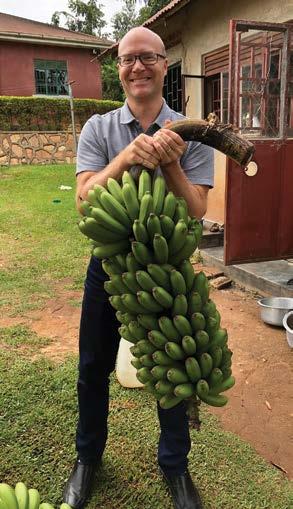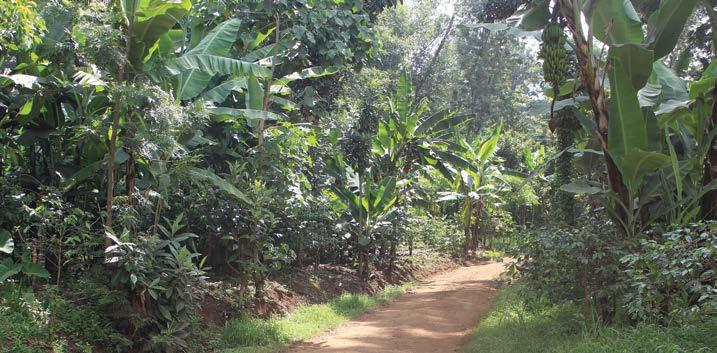
2 minute read
No bananas? MEDA project supports research into new varieties
No bananas? MEDA project supports research into new varieties
Recent media reports say bananas — a breakfast and dessert staple for many — may soon be more expensive.
A banana-killing fungus is threatening production in several countries.
Most of the bananas that North Americans eat come from Guatemala, Costa Rica, Columbia or Ecuador.
There are more than 1,000 types of bananas grown in 135 countries around the world. Major banana exporters in the Americas focus on one variety — the Cavendish.
Cavendish makes up half of world banana production, but close to 99 per cent of banana exports.
If the fungus continues to spread, the industry will need new varieties that are resistant to the deadly Panama disease.
Major banana producers in Central and South America will find a new product to sell. In the 1950s, when disease ravaged the dominant Gros Michel banana, they switched to the Cavendish.

David Eagle holds up a large cluster of bananas
Canadians eat about 15 kilograms of bananas a year, about twice as many as people in the US.
In some parts of Africa, cooking bananas are a dietary staple. People in Uganda eat between 250 and 400kg of bananas per person annually. Sone regions of Africa grow a dozen or more banana varieties. Having crops ravaged by a pest like the Panama fungus is a serious issue for African growers.
Most African banana farmers are small-scale producers. In the Western Hemisphere, Chiquita, Del Monte and Dole operate major plantations.
Small-scale farmers do not have the resources to deal with the Panama fungus.
MEDA’s RAPID banana project is tackling that problem, through work in Tanzania and Uganda.

photos by David Eagle, MEDA
RAPID is a four-year project funded by the Bill & Melinda Gates Foundation. The project aims to commercialize seed multiplication technologies. It will also promote new models to drive investment into banana seed systems in Tanzania and Uganda.
Bananas are vegetatively propagated. This means new plants are generally distributed by small cuttings rather than seeds. Part of one plant is used to grow new plants.
The ease of getting planting material from family or neighbors is a double-edged sword, says David Eagle. Eagle works as associate director of MEDA’s programs in eastern, southern and central Africa.
On the upside, farmers can easily and freely obtain new cuttings. That also means they are not used to paying for material to grow new crops.
Banana seeds are few in number yet needed to pollinate and grow a new variety. Tissue culture grown in labs using banana seeds can produce disease-resistant, high-quality varieties.

Growing new banana varieties

Governments and development agencies can buy and distribute new banana varieties. But doing so reinforces dependency, Eagle says.
MEDA encourages the private sector to have a sustainable business model.
The RAPID project will create demonstration plots. These plots will show farmers the need to invest in new, higher-yielding banana varieties. By focusing on local scale producers, the goal is to build markets and preserve a staple crop.
RAPID will provide capital investment and technical assistance to between 10 and 15 companies that produce banana varieties.
Companies and nurseries will then sell these new banana varieties to farmers at an affordable price. Farmers who invest in new banana varieties will see higher incomes and productivity. ◆






